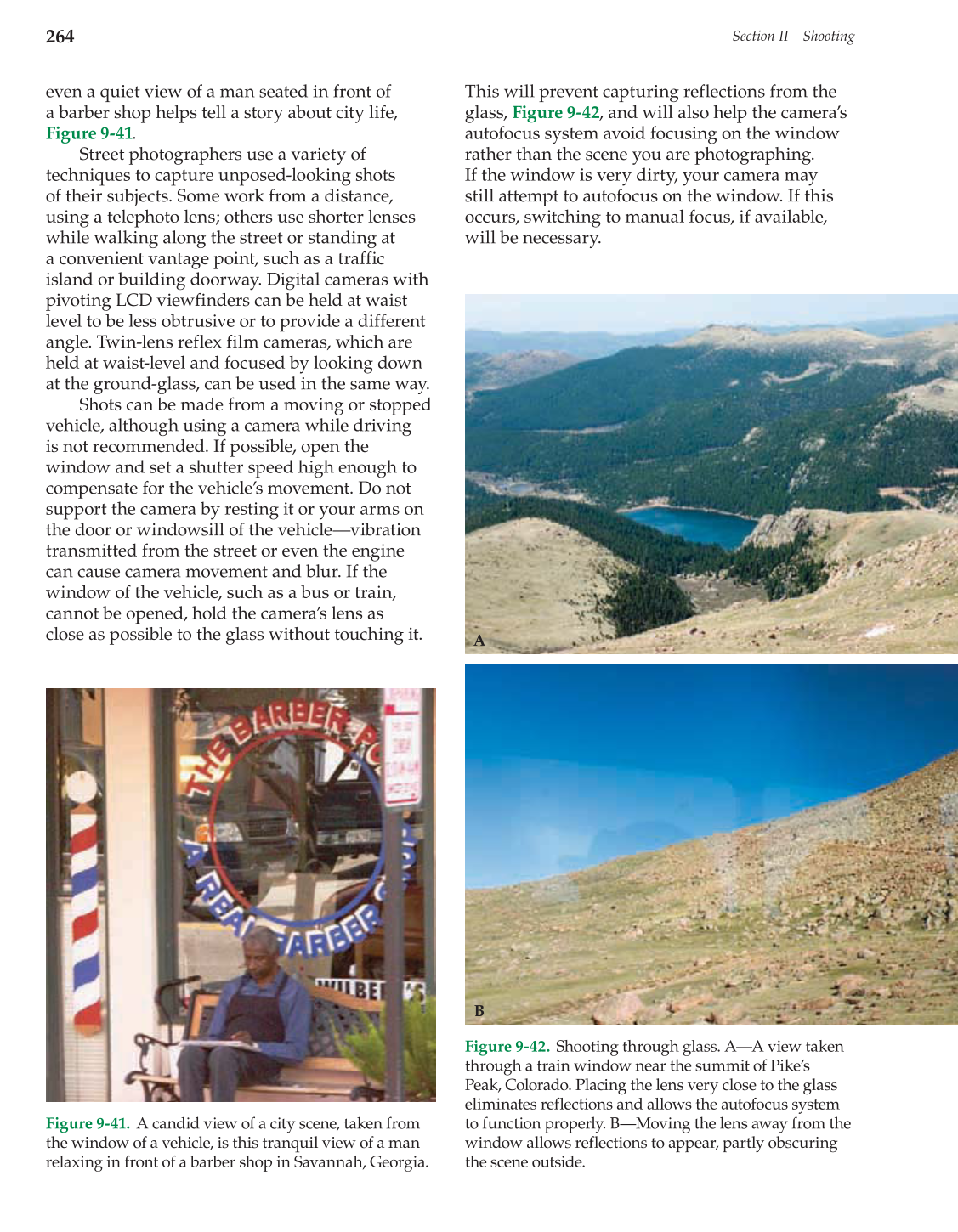264
Section II Shooting
This will prevent capturing reflections from the
glass, Figure 9-42, and will also help the camera’s
autofocus system avoid focusing on the window
rather than the scene you are photographing.
If the window is very dirty, your camera may
still attempt to autofocus on the window. If this
occurs, switching to manual focus, if available,
will be necessary.
even a quiet view of a man seated in front of
a barber shop helps tell a story about city life,
Figure 9-41.
Street photographers use a variety of
techniques to capture unposed-looking shots
of their subjects. Some work from a distance,
using a telephoto lens; others use shorter lenses
while walking along the street or standing at
a convenient vantage point, such as a traffic
island or building doorway. Digital cameras with
pivoting LCD viewfinders can be held at waist
level to be less obtrusive or to provide a different
angle. Twin-lens reflex film cameras, which are
held at waist-level and focused by looking down
at the ground-glass, can be used in the same way.
Shots can be made from a moving or stopped
vehicle, although using a camera while driving
is not recommended. If possible, open the
window and set a shutter speed high enough to
compensate for the vehicle’s movement. Do not
support the camera by resting it or your arms on
the door or windowsill of the vehicle—vibration
transmitted from the street or even the engine
can cause camera movement and blur. If the
window of the vehicle, such as a bus or train,
cannot be opened, hold the camera’s lens as
close as possible to the glass without touching it.
Figure 9-41. A candid view of a city scene, taken from
the window of a vehicle, is this tranquil view of a man
relaxing in front of a barber shop in Savannah, Georgia.
Figure 9-42. Shooting through glass. A—A view taken
through a train window near the summit of Pike’s
Peak, Colorado. Placing the lens very close to the glass
eliminates reflections and allows the autofocus system
to function properly. B—Moving the lens away from the
window allows reflections to appear, partly obscuring
the scene outside.
A
B
